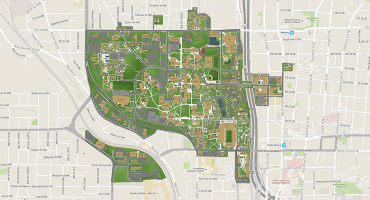Dulas & Duarte, 2014
Not all of what we experience is consciously remembered. We might remember the level of the parking lot but not the space number where we parked the car this morning. We remember fewer of these kinds of details as we age. Little is known about the neural mechanisms that support our ability to remember some aspects of previously experienced events but not others or why we forget more memory details as we get older. In a recent study from our lab, we measured young and older adults’ brain activity in an MRI machine while they learned and later remembered pictures. We directed them to pay attention to some of the details of the pictures to determine how attention affects memory and the brain systems that support memory.
Our results show that young and older adults are able to pay attention to and remember the important details of events but older adults are slightly less likely to remember these details. Attention increased the amount of activity in the hippocampus, suggesting that only the details that people paid attention to were bound into memory. Older adults showed more activity in the medial prefrontal cortex compared to young adults. This suggests that older adults may be less able to remember important event details because they fail to ignore irrelevant thoughts and feelings that are not directly related to what they are being asked to remember.
Bezdek, Gerrig, Wenzel, Shin, Revill, & Schumacher, 2015
Many people report feeling “lost” in a good film or book. In the psychological literature, this phenomenon is called narrative transportation, and one component of it involves engaging attention to the narrative world and disengaging attention to the physical environment beyond the screen. In our study, we tested the hypothesis that suspense would narrow viewers’ attention to the narrative action. Participants lay in an MRI machine and watched scenes from 10 suspenseful movies, including Alfred Hitchcock’s “North by Northwest” and “The Man Who Knew Too Much,” as well as “Alien” and “Misery.” As the movies played in the center of the screen, a flashing checkerboard pattern appeared around the edges. We had another set of participants rate the level of suspense in the films using a joystick slider, so we knew when suspense was rising and falling.
Our fMRI results provided striking evidence in favor of the attention-narrowing hypothesis: at moments of increasing suspense, the part of primary visual cortex that processes the periphery decreased in activity. The part that processes the center of the visual field, where the movies were played, increased in activity. Across the brain, suspense ramped up activity in brain networks that direct attention to engaging stimuli. Suspense ramped down activity in the “default-mode” brain network, which is associated with internally focused tasks, such as mind wandering. These results reveal how narrative suspense can narrow visual processing on a moment-by-moment basis.


